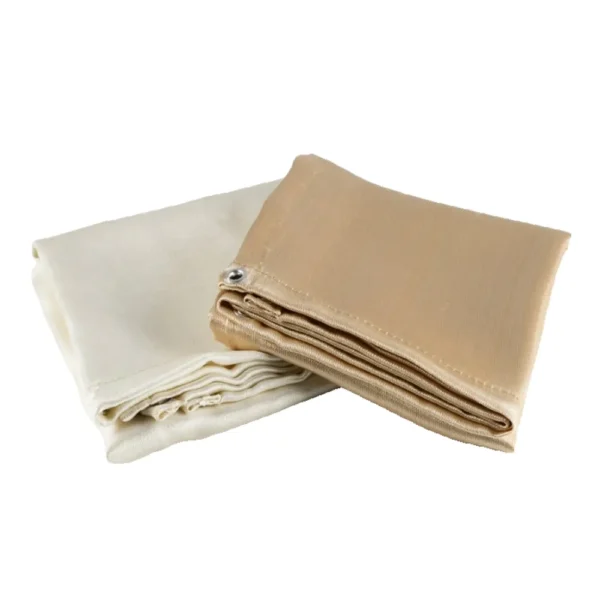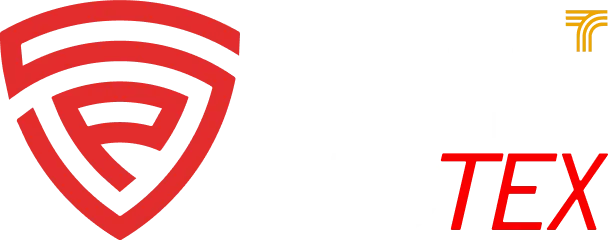Welding blankets are vital safety tools used across industries, with the U.S. market exceeding $100 million annually. These blankets protect workers from sparks, molten metal, and extreme heat during welding.
To perform effectively, welding blankets must meet key certifications like ASTM E84 (Surface Burning Characteristics), NFPA 701 (Flame Propagation), and UL 94 (Flammability Testing). These certifications ensure fire resistance, durability, and heat tolerance, minimizing accident risks.
Non-certified blankets can lead to severe consequences. In 2019, a fire in a manufacturing facility occurred when a blanket failed to meet ASTM E84 standards, resulting in significant damage and injuries. This highlights the importance of using certified products to ensure safety and compliance.
Welding Blanket Certifications
When selecting welding blankets, it’s critical to ensure that they meet established safety and performance standards. The three most important certifications in the welding blanket industry are ASTM E84, NFPA 701, and UL 94.
ASTM E84 (Surface Burning Characteristics)
ASTM E84 certification measures how a material reacts to fire, specifically its flame spread and smoke development. Welding blankets that pass ASTM E84 are crucial for environments where fire safety is a top priority. Materials are tested in a standardized tunnel test, where the rate of flame spread is measured, and the smoke developed is quantified. The lower the flame spread and smoke production, the safer the material is in high-risk environments. Typically, materials must have a flame spread index of 25 or lower to pass.
NFPA 701 (Flame Propagation of Textiles and Films)
NFPA 701 is a fire test standard used for textiles and films. Welding blankets tested to NFPA 701 are evaluated for their ability to resist flame propagation when exposed to open flames. This certification ensures that welding blankets will not continue to burn uncontrollably if exposed to flames, helping to prevent fire from spreading during welding operations. The test measures how quickly the material ignites and how long it burns. The blanket must meet specific time limits for flame duration.
UL 94 (Flammability Testing of Plastic Materials)
UL 94 is particularly important for welding blankets that use plastic or composite materials. This certification evaluates the material’s reaction to fire in terms of flame propagation, burning behavior, and the likelihood of self-extinguishing. Welding blankets passing UL 94 are designed to prevent the rapid spread of flames, especially in the case of plastic coatings or reinforcements used in the blanket’s construction.
In addition to these three key certifications, welding blankets may also be subject to other standards that emphasize general quality, such as ISO 9001 for quality management systems or CE marking for European market compliance. Some may also meet MIL-SPEC (military specifications), which includes rigorous tests for performance in extreme conditions. However, the fire-resistance certifications like ASTM E84, NFPA 701, and UL 94 should remain the primary focus for ensuring that welding blankets can withstand high-heat, high-risk environments.
For example, many large manufacturing plants and construction sites in the U.S. require welding blankets to meet NFPA 701 for fire safety. Companies working with metals, especially in shipbuilding and aerospace, often choose products with ASTM E84 certification to reduce the risk of fire spread, considering the complex and confined nature of their workspaces. Military-grade welding blankets, often required for MIL-SPEC certification, must go beyond fire safety, ensuring that the blanket can withstand extreme temperature fluctuations and impact resistance, which are common in defense operations.
Differences Between Welding and Fire Blanket Certifications


When selecting protective blankets, understanding the differences in certifications for welding blankets and fire blankets is crucial. These blankets serve distinct purposes, with each facing specific standards based on the hazards they are designed to address. Below, we examine the testing criteria, certification standards, and country-specific requirements that differentiate the two.
Testing Criteria
Welding Blankets: Welding blankets are subjected to testing for extreme heat resistance, molten metal exposure, and flame propagation. Key tests include:
ASTM E84: Measures flame spread and smoke development. For welding blankets, materials should have a flame spread index of 25 or lower to ensure that the blanket does not contribute to the spread of fire.
NFPA 701: Tests flame propagation and fabric resistance to fire. A welding blanket should not allow flames to spread rapidly, thus ensuring worker safety in environments where sparks and welding arcs are common.
Molten Metal Resistance: Welding blankets must resist molten metal splashes at temperatures of over 1,100°C (2,012°F). These tests ensure the blanket’s integrity under high heat exposure from welding processes.
BS EN 1869: This European standard tests the effectiveness of fire blankets in controlling fires by suffocation. It is particularly aimed at suppressing fires in emergency situations, such as on a person or small surface fire. Fire blankets must demonstrate the ability to extinguish fires within a specific time frame (typically within 10-15 seconds).
UL 94: Tests flammability of materials and ensures that the fire blanket does not burn uncontrollably when exposed to open flame. Fire blankets must extinguish themselves within a short time after being removed from the flame.
Certification Standards
Welding Blankets: Welding blankets are certified under rigorous standards that ensure their ability to withstand high heat and molten metal exposure:
ASTM E84: This certification ensures the welding blanket does not propagate flames at rates that would compromise safety in confined spaces. Materials tested under ASTM E84 should achieve a Class A rating, with a flame spread index no higher than 25.
NFPA 701: Ensures that welding blankets are flame-resistant and will not allow flames to propagate quickly when exposed to a welding arc or spark. The blankets must pass the vertical flame test, where the fabric is exposed to flames for a specified duration and must extinguish within a set time.
UL 94: Evaluates the flammability of plastics used in composite welding blankets. Materials must pass the V-0 rating, meaning that the material must extinguish itself in less than 10 seconds after being exposed to fire.
BS EN 1869: This standard tests how effectively fire blankets can suppress flames. It requires the blanket to extinguish a small fire (e.g., on clothing or a small surface) within 15 seconds.
UL 94: Ensures that fire blankets made of plastics will not burn uncontrollably in emergencies. The blanket material must pass the V-1 rating, indicating that it is self-extinguishing and will not drip molten material that could cause further fires.
Country-Specific Requirements
United States: In the U.S., welding blankets must meet ASTM E84, NFPA 701, and UL 94 for industrial use, especially in sectors like manufacturing, construction, and shipbuilding. Fire blankets are generally required to meet UL 94 for fire suppression and NFPA 701 for fabric fire-resistance. These standards ensure that welding blankets can withstand high heat and molten metal, while fire blankets are designed for emergency fire suppression.
Europe: In Europe, welding blankets typically follow EN 13501, which classifies materials based on their reaction to fire. BS EN 1869 governs fire blankets, focusing on their ability to suffocate flames in emergency situations. European standards require that welding blankets be able to withstand temperatures up to 1,000°C (1,832°F), and fire blankets must extinguish fires within 10 seconds.
Asia: Certification requirements for welding and fire blankets in Asia can vary. Many countries follow ISO 9001 for quality management and ISO 13732 for heat resistance in welding blankets. Fire blankets are often tested to UL 94 or local fire safety codes. In some countries, certifications may not be as stringent, but increasingly, international standards are being adopted for safety and fire prevention.
Welding blankets and fire blankets serve distinct purposes and are governed by different certifications. Welding blankets are specifically designed to withstand extreme temperatures, molten metal, and flame propagation, while fire blankets focus on suppressing small fires in emergency situations. Understanding the differences in testing criteria, certification standards, and country-specific requirements is crucial when selecting the appropriate protective blanket for your needs.
At Safeprotex, we specialize in manufacturing high-quality welding blankets and fire blankets that meet the highest industry certifications. Our products are designed to provide superior protection in both welding environments and emergency fire scenarios. Contact our experts today to explore the best fire protection solutions tailored to your needs.
